Natural compounds attenuate combined chromium and arsenic-induced oxidative stress and nephritic apoptosis by activating the Nrf2/Keap1 signaling and associated xenobiotic metabolizing enzymes
- PMID: 40877299
- PMCID: PMC12394698
- DOI: 10.1038/s41598-025-13969-2
Natural compounds attenuate combined chromium and arsenic-induced oxidative stress and nephritic apoptosis by activating the Nrf2/Keap1 signaling and associated xenobiotic metabolizing enzymes
Abstract
Chromium (Cr) and arsenic (As) pose a threat to the exposed population, leading to various renal ailments. Although individual toxicity has been well investigated, little is known about their combined effects. In light of the mounting concern over the environmental impact of heavy metals, the current study investigated the potential benefits of the selected nutraceuticals, i.e., biochanin-A (BCA), coenzyme Q10 (CoQ10), and phloretin (PHL) in combined Cr + As intoxicated Swiss albino mice, providing a comprehensive understanding of the mechanism of action. During the two-week investigation, Cr (75 ppm) and As (100 ppm) were given orally to induce renal toxicity, and were simultaneously treated with BCA (50 mg/kg), CoQ10 (10 mg/kg), and PHL (50 mg/kg) intraperitoneally. The Cr + As-treated group showed an increase in kidney somatic index, metal burden, protein carbonylation, and malondialdehyde, along with a decrease in the activity of (superoxide dismutase, catalase, glutathione-S-transferase, reduced glutathione, and total thiol). Furthermore, DNA degradation, histology, and altered SIRT1/Nrf2/HO‑1/NQO1/SOD2/CYP1A1/KEAP1/CAS-8, and CAS-3 gene expressions corroborated the above findings. Alternatively, co-treatment with the selected antioxidants reversed the above mentioned parameters, highlighting the protective effects of these compounds against Cr + As-induced oxidative damage. Nrf2, a key player in this process, is responsible for the activation of the antioxidant response element and subsequent expression of antioxidant enzymes. We further investigated the possible interactions of BCA, CoQ10, and PHL with the antioxidant enzymes/proteins, SIRT1/Nrf2/KEAP1/HO-1/NQO1, using in silico studies. Our study offers new avenues for the future of chronic kidney disease treatment associated with Cr + As-induced exposure, providing a deeper understanding of the role of Nrf2 in this context.
Keywords: Arsenic; Biochanin-A; Chromium; Coenzyme Q10; Phloretin; Reactive oxygen species.
© 2025. The Author(s).
Conflict of interest statement
Competing interests: The authors declare that they have no known competing financial interests or personal relationships that could have appeared to influence the work reported in this paper.
Figures


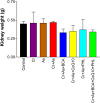





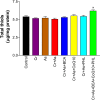
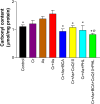


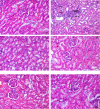
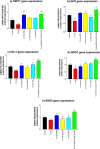





Similar articles
-
Attenuation of chromium (VI) and arsenic (III)-induced oxidative stress and hepatic apoptosis by phloretin, biochanin-A, and coenzyme Q10 via activation of SIRT1/Nrf2/HO-1/NQO1 signaling.J Biochem Mol Toxicol. 2024 Sep;38(9):e23817. doi: 10.1002/jbt.23817. J Biochem Mol Toxicol. 2024. PMID: 39177155
-
Alleviating effect of antioxidants on combined chromium and cadmium-induced neurotoxicity and apoptosis by activating the Nrf2-keap1 and associated pathway in Swiss albino mice.Metab Brain Dis. 2025 Apr 4;40(4):171. doi: 10.1007/s11011-025-01594-x. Metab Brain Dis. 2025. PMID: 40183992
-
Arsenic and Chromium Induced Toxicity on Zebrafish Kidney: Mixture Effects on Oxidative Stress and Involvement of Nrf2-Keap1-ARE, DNA Repair, and Intrinsic Apoptotic Pathways.J Appl Toxicol. 2025 Mar;45(3):387-399. doi: 10.1002/jat.4709. Epub 2024 Oct 14. J Appl Toxicol. 2025. PMID: 39402722
-
Heavy metals: toxicity and human health effects.Arch Toxicol. 2025 Jan;99(1):153-209. doi: 10.1007/s00204-024-03903-2. Epub 2024 Nov 20. Arch Toxicol. 2025. PMID: 39567405 Free PMC article. Review.
-
Metal profiling in coronary ischemia-reperfusion injury: Implications for KEAP1/NRF2 regulated redox signaling.Free Radic Biol Med. 2024 Jan;210:158-171. doi: 10.1016/j.freeradbiomed.2023.11.013. Epub 2023 Nov 19. Free Radic Biol Med. 2024. PMID: 37989446 Review.
References
-
- Pratush, A., Kumar, A. & Hu, Z. Adverse effect of heavy metals (As, pb, hg, and Cr) on health and their bioremediation strategies: a review. Int. Microbiol.21 (3), 97–106 (2018). - PubMed
-
- Hingston, J. A. et al. Leaching of chromated copper arsenate wood preservatives: a review. Environ. Pollut. 111 (1), 53–66 (2001). - PubMed
-
- Poonia, T., Singh, N. & Garg, M. Contamination of arsenic, chromium and fluoride in the Indian groundwater: a review, meta-analysis and cancer risk assessment. Int. J. Environ. Sci. Technol.18, 2891–2902 (2021).
-
- Goswami, R. et al. Potential arsenic-chromium-lead Co-contamination in the hilly terrain of Arunachal pradesh, north-eastern india: genesis and health perspective. Chemosphere323, 138067 (2023). - PubMed
MeSH terms
Substances
LinkOut - more resources
Full Text Sources
Medical
Research Materials
Miscellaneous

